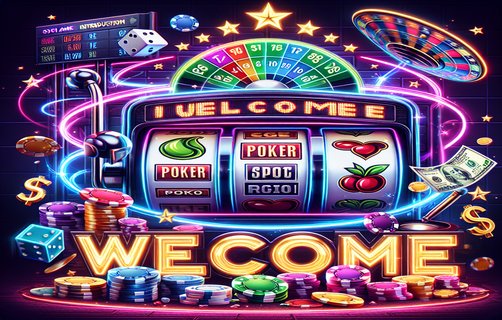Mastering Poker: Betting Strategies and Player Dynamics
पोकर मास्टरिंग: बेटिंग स्ट्रैटजेज और प्लेयर डायनैमिक्स

In the competitive world of poker, understanding hand rankings is fundamental. Players must be keenly aware of how their own hands compare to potential opponents', impacting their betting strategy significantly. The reactions and movements of players can indicate their confidence or hesitation, which can sway the game's outcome. For instance, a player who suddenly becomes still or overly animated may signal a strong hand or a bluff, respectively.
This careful observation of player reactions forms an integral part of gameplay, allowing for adaptations based on the psychological landscape of the table. Each round of poker unfolds in phases: the pre-flop, flop, turn, and river. Clarity in these stages helps both novice and seasoned players strategize better. Knowing when to raise, call, or fold depends significantly on the context of each round, the revealed community cards, and the betting patterns thus far. It's crucial to develop a keen sense of timing rhythm as the phases progress, adjusting one's actions to maximize opportunities.
Error control during gameplay is essential; misreading a situation or a hand can lead to significant losses. Players must continuously assess their decisions and those of their opponents, maintaining focus to minimize the risk of costly mistakes. Keeping a steady mental state prevents miscalculations and enhances overall performance. Simultaneously, amount management guidelines are critical. Effective bankroll management involves determining how much to wager in different situations, preserving chips for prolonged play while capitalizing on optimal betting opportunities.
Additionally, the optimization of reward use is necessary—balancing risk and reward is an essential poker skill. Players must weigh the odds of achieving a winning hand against potential losses. This involves calculating pot odds and implied odds, integrating them into decision-making processes leading to better outcomes.
Pacing and timing techniques also play crucial roles in poker betting. It's essential to maintain a steady pace to avoid making rash decisions influenced by the game's tempo. Taking time to analyze the board and opponents can present edges that hastily playing might miss.
Lastly, the rhythm of the game should be managed, maintaining a balance between aggression and caution. Mastery of these varied components not only enhances individual performance but also elevates the overall experience of the game. As players become more adept at navigating these dynamics, they can leverage their skills to increase their betting success, consistently outperforming their opponents and enjoying the intricacies of poker.

पोकर की प्रतिस्पर्धात्मक दुनिया में, हाथ की रैंकिंग को समझना मौलिक है। खिलाड़ियों को सावधानी से यह देखना चाहिए कि उनके खुद के हाथ संभावित विरोधियों की तुलना में कैसे रैंक करते हैं, जो उनकी बेटिंग रणनीति को महत्वपूर्ण रूप से प्रभावित करता है। खिलाड़ियों की प्रतिक्रियाएँ और गति उनकी आत्मविश्वास या हिचकिचाहट का संकेत दे सकती हैं, जो खेल के परिणाम को प्रभावित कर सकती हैं। उदाहरण के लिए, एक खिलाड़ी जो अचानक चुप या अधिक जीवंत हो जाता है, एक मजबूत हाथ या एक ब्लफ का संकेत दे सकता है।
खिलाड़ी की प्रतिक्रियाओं पर यह सावधानीपूर्वक ध्यान खेल के अनुभव का एक अभिन्न हिस्सा है, जिसमें मेज़ पर मनोवैज्ञानिक परिदृश्य के आधार पर समायोजन किया जाता है। पोकर का प्रत्येक दौर विभिन्न चरणों में खुलता है: प्री-फ्लॉप, फ्लॉप, टर्न और रिवर। इन चरणों में स्पष्टता नए और अनुभवी खिलाड़ियों को बेहतर रणनीति बनाने में मदद करती है। कब बढ़ाना, कॉल करना या फोल्ड करना है, यह काफी हद तक प्रत्येक दौर के संदर्भ, प्रकट सामुदायिक कार्ड और अब तक के बेटिंग पैटर्न पर निर्भर करता है।
खेल के दौरान त्रुटि नियंत्रण आवश्यक है; किसी स्थिति या हाथ को गलत पढ़ना महत्वपूर्ण नुकसान का कारण बन सकता है। खिलाड़ियों को लगातार अपने निर्णयों और अपने विरोधियों के निर्णयों का आकलन करते रहना चाहिए, ध्यान बनाए रखना चाहिए ताकि महंगे गलतियों का जोखिम कम हो सके।
साथ ही, राशि प्रबंधन दिशा-निर्देश महत्वपूर्ण हैं। प्रभावी बैंक रोल प्रबंधन में विभिन्न स्थितियों में कितना दांव लगाना है, यह निर्धारित करना शामिल है, लंबे समय तक खेलने के लिए चिप्स को सुरक्षित रखना जबकि सर्वोत्तम बेटिंग अवसरों का लाभ उठाना।
अथवा इनाम के उपयोग के अनुकूलन की आवश्यकता होगी—जोखिम और पुरस्कार का संतुलन पूछे जाने वाली एक आवश्यक पोकर कौशल है। खिलाड़ियों को एक जीतने वाले हाथ को प्राप्त करने के अवसरों और संभावित हानियों का वजन करना चाहिए।
अंत में, गति और समय की तकनीकें भी पोकर में महत्वपूर्ण भूमिका निभाती हैं। यह उद्देश्य महत्वपूर्ण है कि एक स्थिर गति बनाए रखना, ताकि खेल के ताल पर प्रभावित निर्णय लेने से बचा जा सके। बोर्ड और विरोधियों का विश्लेषण करने के लिए समय निकालना अक्सर ऐसे किनारों को प्रस्तुत कर सकता है जो जल्दी खेलने में छूट सकते हैं।
अंत में, खेल के माहौल का प्रबंधन भी जरूरी है, आक्रामकता और सतर्कता के बीच संतुलन बनाए रखना। इन कई घटकों में क्षमता न केवल व्यक्तिगत प्रदर्शन को बढ़ाता है, बल्कि पूरे खेल के अनुभव को भी ऊपर उठाता है। जैसे-जैसे खिलाड़ी इन गतिशीलताओं को नेविगेट करने में अधिक कुशल होते जाते हैं, वे उनकी क्षमताओं को लाभ में बदल सकते हैं।

comments
AceMaster45
This article provides valuable insights on player psychology during poker!
PokerPro22
I love how it emphasizes timing and rhythm control; essential for winning.
BluffKing
Great read! The amount management guidelines are particularly useful.
LadyLuck88
Very informative! I’ll definitely apply these strategies in my next game.
ChipCollector
The section on error control was a real eye-opener!
StrategistX
Pacing and timing techniques are crucial; I can't wait to try these out!